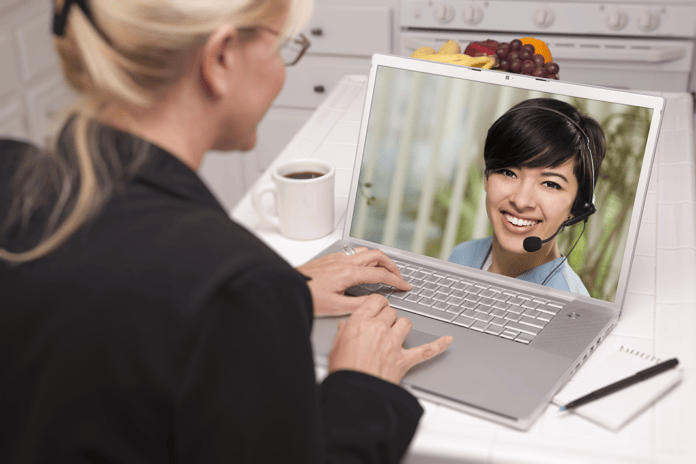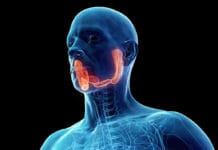Clinical teledentistry made its debut with the United States military in 1994 but has surprisingly remained absent from our professional lives until recently1. Now, however, it is one of the hottest topics among oral health providers everywhere. The word “teledentistry” has become fresh, somewhat mysterious, and simply mentioning it prompts instant questions and interest. Revolutionary things like this are hard to come by in our slow-moving profession. Heck, we’ve been drilling, filling, and hand-scaling for decades. While there have been many scientific advances, nothing has quite enticed those in the dental world more than the thought of teledentistry. What exactly is it? How do I use it? Will insurance reimburse me? My friends, dentistry has embraced a new lover, and whether you like it or not, teledentistry will soon have its digital hands in everything we do.
Is teledentistry our long-term future or merely a casual fling?
Good question. By way of analogy, consider a somewhat recent revolutionary advancement: the iPhone. Was the iPhone the wave of the future or merely a passing fad when it was first released in 2007? Unless you are part of the newest iGeneration, you may remember how you felt when you first encountered the concept of a phone that not only surfs the ‘net but also takes photos and videos. The iPhone was fresh, exciting, mysterious, and took only a few years to ingrain itself in every moment of our lives. How many of us can now imagine a single hour apart from it, let alone a whole day? It didn’t take long for us to accept the iPhone as a committed part of our future. This is precisely what teledentistry is to our profession. It is entering our careers with an exhilarating bang and a bit of mystery but soon will be ingrained in every aspect of clinical dentistry. Do we have a long-term future with this partner? Absolutely.
So, what exactly are we committing our futures to?
Teledentistry is defined as “… a combination of telecommunications and dentistry involving the exchange of clinical information and images over remote distances for dental consultation and treatment planning1.” The reality is we already use it when we fax and email other healthcare providers. With the addition of the CDT 2018 teledentistry codes and the advent of innovative companies like MouthWatch, clinicians now have the ability to use synchronous (live video), and asynchronous (store-and-forward) techniques to virtually reinvent the definition of a “dental appointment2,3.” Simply put, the adaptability of teledentistry will transform how we have been “doing” dentistry for ages and will significantly improve our existing model of care for decades to come.
A report from the U.S. Department of Health and Human Resources projects that by the year 2025 there will be a national shortage of dentists and a surplus of hygienists4. Leaders in the dental community have been responding to this data with out-of-the-box solutions to this crisis—creating new providers like dental therapists, reducing supervision requirements for dental hygienists, and introducing loan-forgiveness programs for dentists. Along with these tangible solutions, teledentistry itself will positively impact the shortage of clinicians providing direct patient services and directly impact transportation barriers patients often face. Teledentistry, dear readers, is no one night stand.
Consider the work of Operation Grace MN as an example of teledentistry reinventing the traditional dental appointment. As a volunteer-based, mobile dental team that provides free care to underserved students in schools, we recently launched a new teledentistry program in which a team of hygienists – and sometimes even dental therapists – provide direct patient care independent from a dentist. Not only do these hygienists offer a full range of preventive and therapeutic services without a dentist on-site, but they now offer a comprehensive virtual dental assessment using an intraoral camera, various caries-detection technologies, a portable X-ray device, and cloud-based software. In this scenario, the “virtual” dentist has the ability to simultaneously supervise multiple mobile teams without having to physically travel and is free to review charts, images, and create treatment plans on their own time.
Another added benefit of teledentistry within Operation Grace MN has been the staggering increase in dentists who volunteer to serve.
Since announcing the launch of our new program, dentists who otherwise could not provide services are now able to do so from the comfort of their own homes. Because of the nature of clinical dentistry, sometimes dentists have found themselves unable to practice for various reasons – medical conditions, maternity leave, or simply no longer being able to handle the physical demands of working in the op – to name but a few. This previously underutilized group of dentists now has the ability to provide out-of-the-op care to patients who desperately need their services. As teledentistry (like your iPhone) becomes more and more mainstream, this increase in the availability of clinicians will only allow us to expand our mobile services to additional underserved communities. This unexpected growth in providers within our organization, and the clinical benefits that continue to be realized is reflective of the national impact teledentistry is prepared to have on access to care concerns.
Fellow hygienists, the dental profession has found a long-term future in teledentistry. This seemingly odd love affair has the power to force clinical dentistry to redefine itself. Perhaps the changes it inevitably brings will increase opportunities for hygienists to explore our ambitions or simply remind us why we chose this career in the first place. Maybe even then we can embrace this odd love affair and once again fall in love with our careers, teledentistry, and all that comes with it. Let’s not let this be the one that got away.
NOW READ: Dear IA Nerve Block: It’s Not Me, It’s YOU!
References
- Nutalapati, R. et al. “Applications of Teledentistry: A Literature Review and Update.” Journal of International Society of Preventive and Community Dentistry, 1, no. 2, 2011, p. 37., doi:10.4103/2231-0762.97695.
- Burger D. Code Maintenance Committee OKs teledentistry, A1c codes. ADA News http://www.ada.org/en/publications/ada-news/2017-archive/march/code-maintenance-committee-oks-teledentistry-a1c-codes. Published March 14, 2017. Accessed November 23, 2017.
- https://www.mymouthwatch.com
- National and State-Level Projections of Dentists and Dental Hygienists in the U.S., 2012-2025. Accessed November 2017 from https://bhw.hrsa.gov/sites/default/files/bhw/nchwa/projections/nationalstatelevelprojectionsdentists.pdf.












